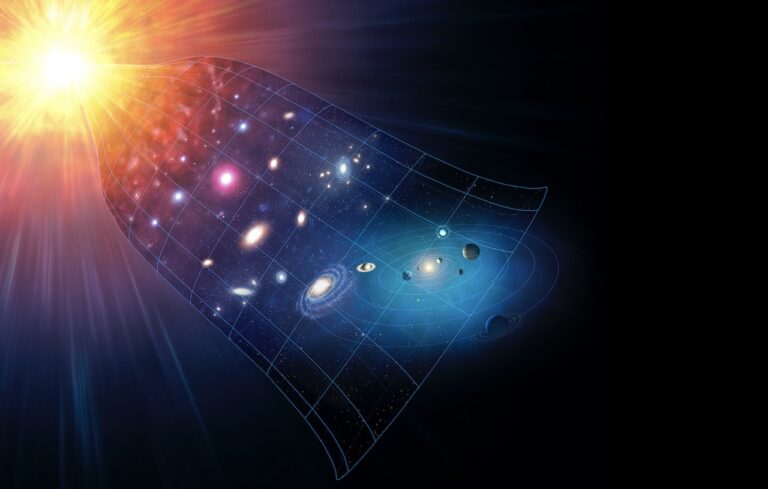Nobel Laureate Claims Evidence of a Pre-Big Bang Universe That Can Still Be Observed Today
Evidence of a Pre-Big Bang Universe Found by Nobel Laureate Sir Roger Penrose
The current Nobel prize winner in physics Roger Penrose has aver that there is still ways that scientists can point to pre-big bang evidence in the current world. Penrose then identified six ‘Hawking Points’; six warmer areas in the sky each of them nearly eight times the size of the moon which Penrose thinks are leftover evidence of black holes from a previous stellar age. Penrose’s data indicate that these black holes emitted Hawking radiation prior to the occurrence of the Big Bang and are still detectable today. His theory proves the cyclic model of the universe saying that each Big Bang means the end of the certain aeon and the start of the new one.
In 2020 at 89 years of age Sir Roger Penrose was awarded the Nobel Prize for Physics for his discovery on black holes. He said that he found six ‘warm’ areas of the sky that he called ‘Hawking Points,’ in honor of Professor Stephen Hawking. Such structures, each approximately equal to eight times the diameter of the Moon are believed to represent black holes which radiated before and ‘evaporating’ as Hawking suggested. I hope that these ’embalmed’ black holes from earlier epochs of the world are now detectable, which will confirm Hawking’s theories, – wrote Penrose.
Penrose, who jointly with Hawking won the Wolf Prize in Physics in 1988 for their work on black holes mentioned from his home in Oxford, “I maintain that there is detailed observational evidence of the Hawking radiation The Big Bang was not the origin it was preceded by something- and that something will also be the ultimate end- The universe expands and dies and in this theory the remote future is the Big Bang of a new era.
He went on to say, “Our Big Bang came in from the distant future of a prior aeon, where like black holes, these began to evaporate through Hawking radiation to form these Hawking Points in the sky We are now seeing them, these are objects eight times the diameter of the Moon and represent slightly warmer regions There is good evidence for at least six such points.
This is in a recent work where Penrose wrote on his theory of ‘Hawking points’ published in Monthly notices of the Astronomical society. However, his idea is still good to allow for the big bang, but more so the ‘big crunch,’ where the universe expands and eventually contracts or the theory of the cyclical model of the universe.

Electronic Pre-Conference Proceedings of the Conference on Current Issues in Education: Regarding the Nature Black holes were once considered as controversial idea. It was first conceived by an English parson John Mitchell in the year 1783, which said that if the object amassed enough mass or density, then even the ray of light cannot get out of it. As Albert Einstein of Relativity once said, they only existed as a mathematical game rather than a physical phenomenon. Yet in 1964, nine years after Einstein’s death, Sir Roger proved that black holes are inherent in general relativity. He proved that objects, which are very massive, contract under the influence of gravity and at some point lead to singularity, the state beyond which all currently identified laws of physics are inapplicable.
It is worth noting that up to the date, Sir Roger’s paper can be regarded as one of the most important since Einstein shedding more light on the big bang theory.
Looking back on his experiences, 63-year-old Sir Roger, who first conceived the idea in his mid-thirties while walking to a tube station in London, said: “It is not very good to get a Nobel Prize too young. Some researchers who received this award early felt degraded in their work after that. If you are going to get Nobel Prize, it is better to get it when one is older but still able to do something for
Sir Roger was a co-recipient of the Nobel Prize alongside Reinhard Genzel of Max Planck Institute for Extraterrestrial Physics and Andrea Ghez a professor at UCLA who provided the confirmation of the presence of a supermassive black hole at the centre of the galaxy by observing the impact of the celestial object on stars within the vicinity.
Martin Rees, an Astronomer Royal, and a Fellow of Trinity College, University of Cambridge said, “It is a great pity that Hawking did not live long enough to enjoy such an honor. ” He said, “Penrose is very creative and has been making original contributions for 60 years now in my opinion Penrose and Hawking are the two people since Einstein who have contributed the most towards our understanding of gravity There is a general agreement that this credit would have been shared with Hawking if only he had not died.
In awarding it this year, Professor Göran Hansson, secretary general of the Royal Swedish Academy of Sciences said that this year’s award was one that brought to light what ‘lies at the deepest end of the cosmos’ While Professor Toby Wiseman, the theoretical Physics Professor from Imperial College-London said that; ‘Penrose proved that, for mater’s sake if Einstein’s theories are correct then black hole is inevitable when certain stars die Black holes
Do not forget to share your opinion with us to provide you with the best posts !




0 Comments